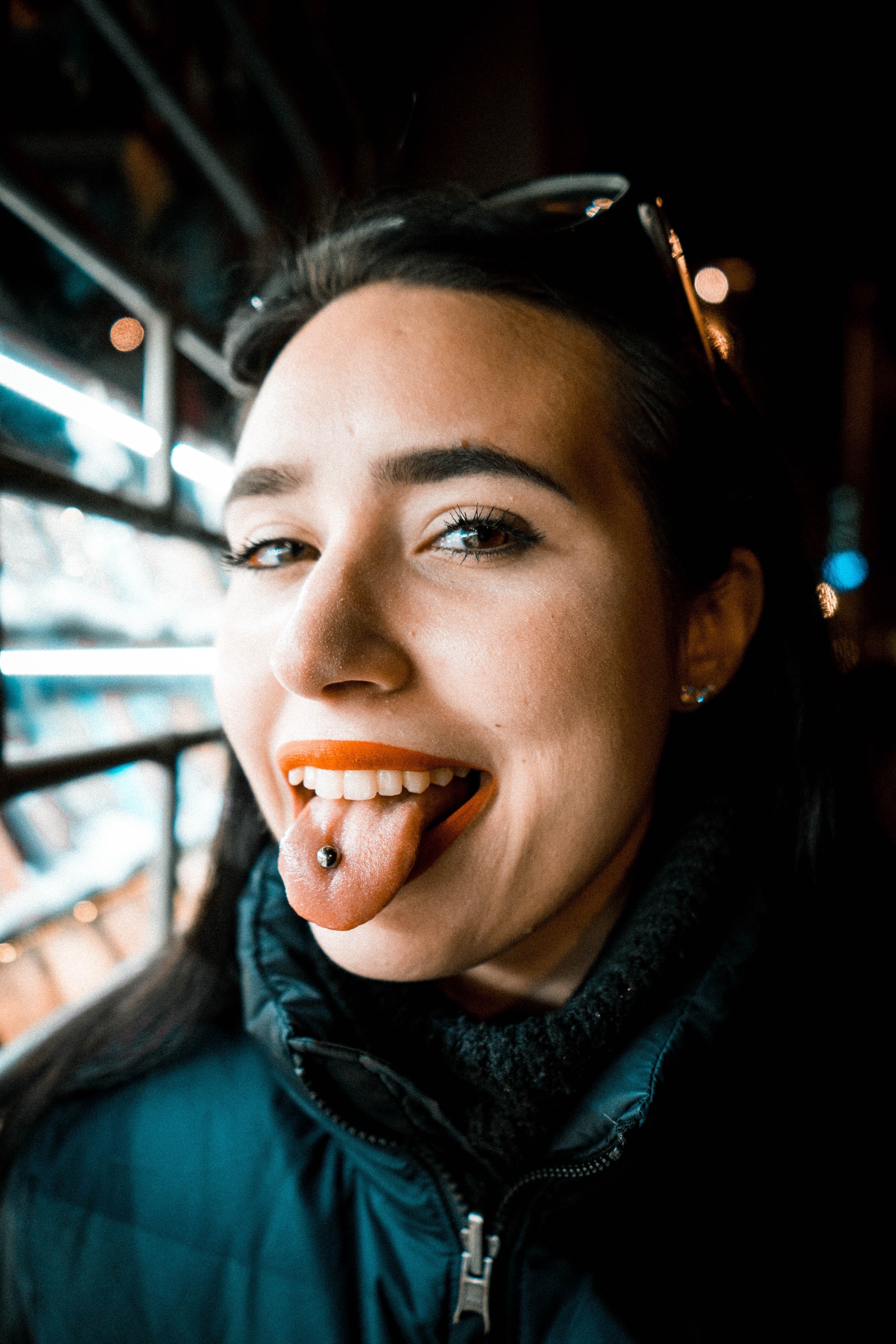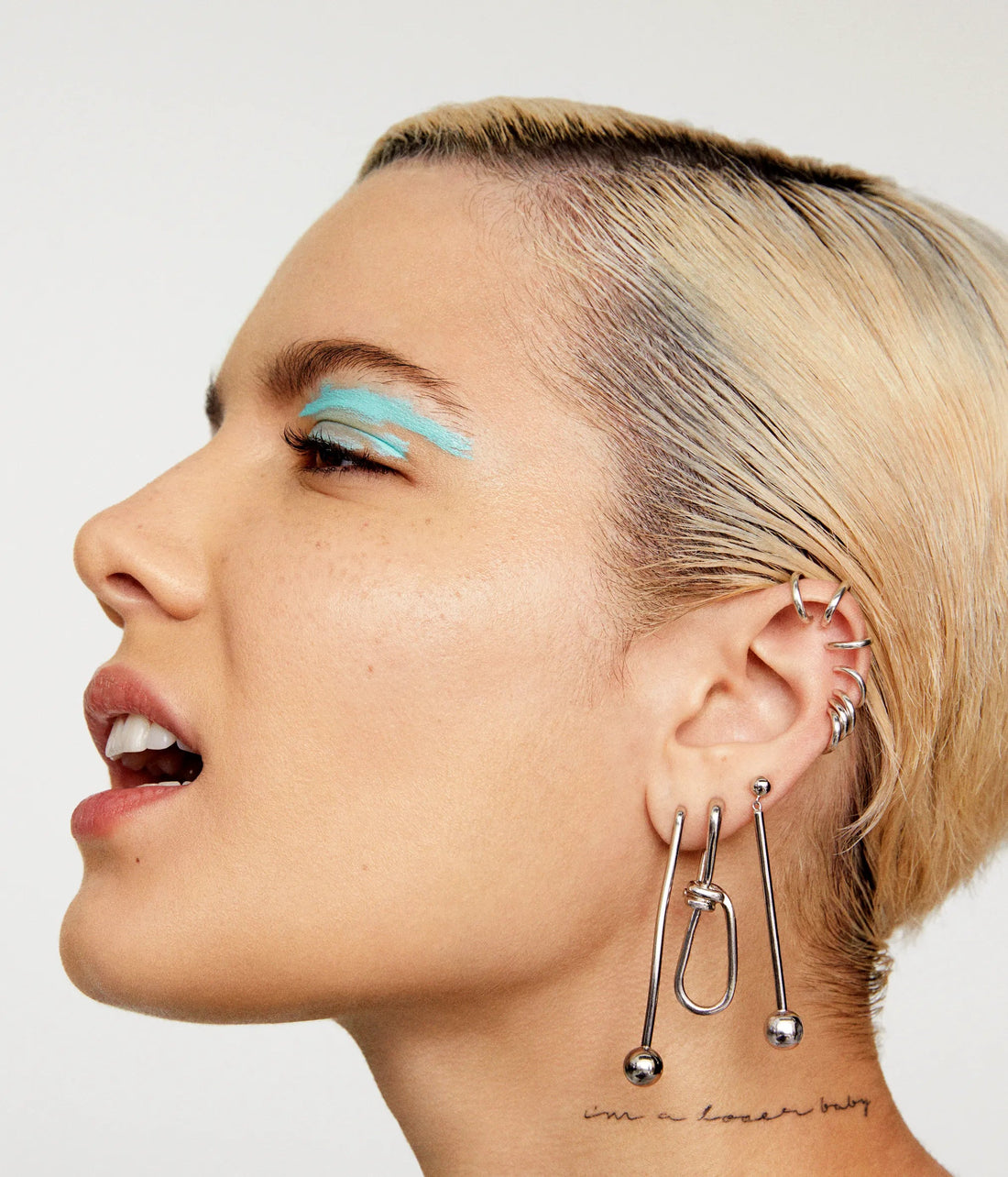Getting a new piercing is always exciting, but the journey doesn’t end when you step out of the studio.
Good piercing aftercare is vital for the healing process. A piercing is essentially a wound, after all, and your body needs time and the right care to recover fully. A sufficient cleaning and aftercare routine with the right products reduces the risk of your body rejecting the piercing. You’ll also be able to change out the jewelry sooner.
This blog post will give you a step-by-step guide on caring for your new piercing, as well as the perfect products to help your piercing heal quickly and safely.
What is Piercing Aftercare?
Piercing aftercare is the act of looking after your piercing. This includes keeping your piercing clean, avoiding activities that will irritate it, and giving it time to heal before you change the jewelry.
Aftercare Guide: How to Clean Your Piercing

A trusted piercing studio should always give you aftercare instructions for your specific piercing. Some take longer to heal than others. But, here is a general cleaning guide that you can repeat until your piercing is fully healed.
- Wash your hands - Cleaning with washed hands is very important. Touching your piercing with unwashed hands is a fast track for infections.
- Wipe with a cue tip - soak a cotton pad or a cue tip in warm water and wipe away any crusty areas. (Sounds gross, but trust me, they’re a normal part of healing)
- Anti-bacterial soap - wash the site of your piercing with unscented soap.
- Saline solution - clean your piercing at least once a day with a piercing aftercare spray like saline solution. Some artists recommend cleaning it twice a day in the first four weeks until it is fully healed or whenever it’s infected.
- Rinse - rinse the area thoroughly using warm water.
- Pat dry - use a towel to pat dry.
Piercing Aftercare Advice: The Dos and Don’ts of Piercing Aftercare
Looking after a new piercing is easy when you follow the right steps. However, there are some things you should avoid to help protect against infection. No one wants a rejected piercing.
So here are the dos and don’ts of piercing aftercare etiquette:
|
Warning: some initial redness, tenderness, swelling directly after piercing, and white/yellowish discharge are a normal part of the healing process. But if you do notice any dark yellow or green discharge, you notice a large hard lump, or it smells funny, consult your piercing studio or your doctor. |
Do Clean Regularly

Follow a strict cleaning routine, especially for the first four weeks after getting your piercing. Keep away those furry friends and only touch those earrings with clean hands.
Do Avoid Irritants
Whether it’s rolling over when you’re sleeping or taking your T-shirts off more carefully, do be careful around your new piercing. You can even use a travel pillow to elevate any ear piercings while you sleep. The less you touch it, the less likely it is to get infected.
Avoid harsh chemicals that can irritate the wound, including cleaning products with alcohol in them. Swimming is also off limits thanks to chlorine or any other bacteria that might be found in a swimming bath or body of water.
Don’t Change Jewelry Too Soon

You need to give your piercing sufficient time to heal before you start changing it out for some fancy hoops. You can change earlobe piercings after a minimum of six weeks, and cartilage can be changed after a minimum of six months. It can take between nine months and a year to fully heal, especially if you have complications.
Don’t Rotate Your Piercing
You might want to turn your piercing while cleaning it or removing hardened discharge. Don’t. You can accidentally remove the ball from any jewelry, and you might agitate the wound and cause an infection.
Piercing Aftercare Products
It can be tempting to use every product under the sun to help your piercing heal. This isn’t a good idea. As we outlined above, there are some products to stay away from, especially ones containing alcohol. These products can actually cause irritation and your piercings to get infected.
There are, however, a number of products that are perfectly safe to use during the healing process.
Psst, you get all these piercing aftercare products from BodyJ4You. 🤫
Salt Solution
Sea salt is a great natural cleanser for wounds. If you don’t happen to live by the ocean, you can buy a handy sea salt solution. You can even get a specialist piercing aftercare mouth rinse to clean mouth piercings.
You can also make a salt solution at home with ¼ of a teaspoon of sea salt and a cup of boiled water. Make sure you use non-iodized salt.
Saline Spray
@bodyj4you Repost @jasminl33_ showing how she uses our saline spray to keep her ear piercings clean and healthy! #curatedear #piercingaftercare #piercing ♬ original sound - BodyJ4You
As we mentioned before, saline spray is one of the safest cleaning products to help the healing process.
This is a piercing aftercare spray that will help remove dirt and dried discharge and stop your new piercing from getting infected.
Jojoba Oil
Especially good for stretched piercings from gauges, jojoba oil is a product made from natural materials that can help speed up the healing process. It speeds up wound closures by encouraging the body to produce collagen.
Jojoba oil also acts as a moisturizer which helps prevent skin irritations.
Piercing Bump Treatment
If you want to find out all about piercing bumps and how to avoid them, check out our previous blog.
Piercing bumps can be a menace to anyone, even if this isn’t your first time getting a nose ring. This is when a piercing bump treatment might come in handy to help keep those annoying bumps away.
Piercing Aftercare Summary
A lot of piercing aftercare is common sense. There are some helpful products to speed up the process, but most of it takes time and patience.
Here is a little summary of everything we covered on how to look after your piercings:
|
✅ DO only touch your piercing with clean hands.
✅ DO follow a strict cleaning routine for the first four weeks.
✅ DO use recommended cleaning products such as piercing aftercare spray and jojoba oil.
✅ DO avoid sleeping on your piercing while it’s healing.
✅ DO use a travel pillow or elevate your piercing while sleeping. ❌ DON’T rotate or turn your piercing. |





